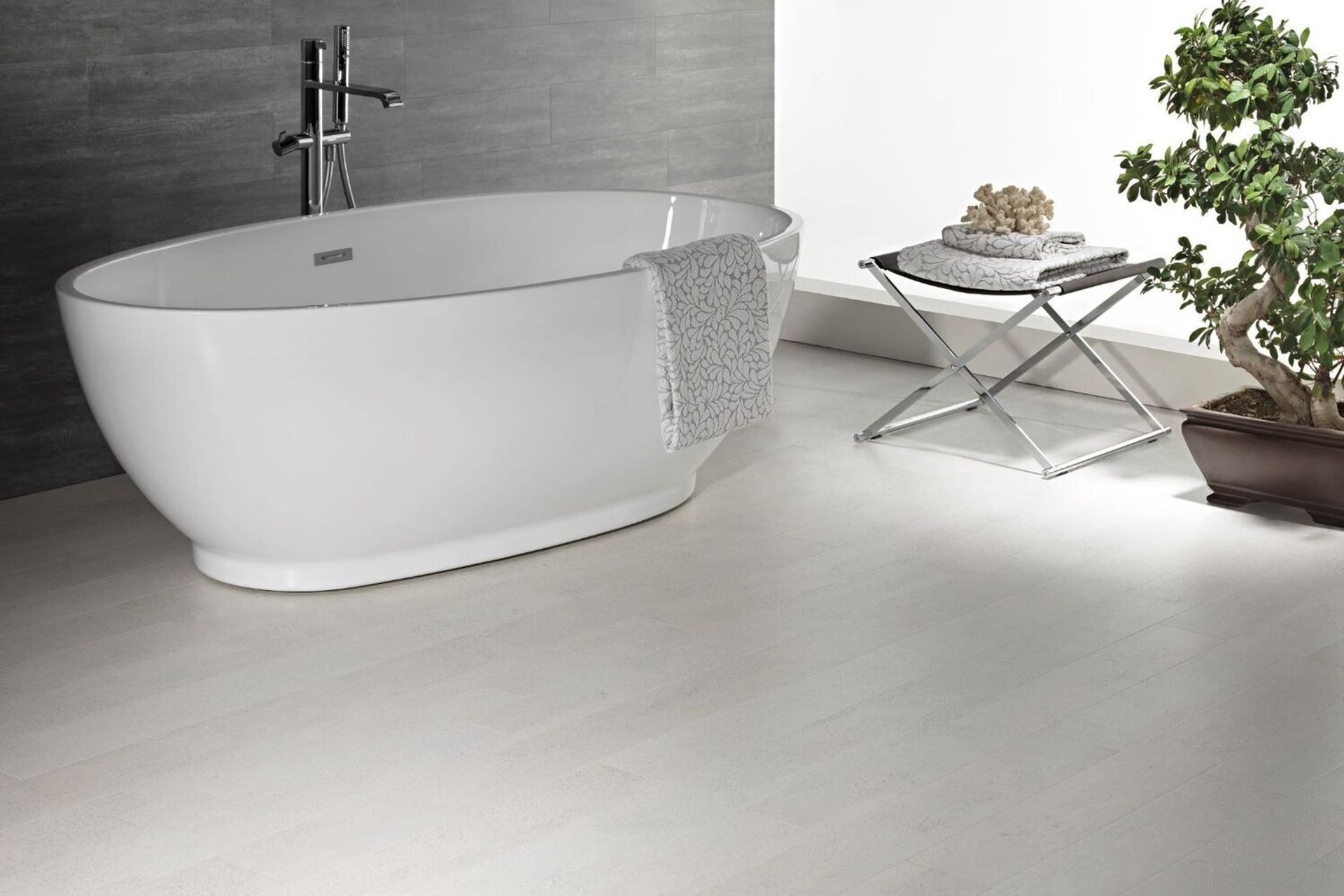Technology stacks up cork performance
Written by
22 June 2021
•
3 min read

As technology has advanced, cork flooring has evolved into an entirely new product, opening up some innovative and edgy possibilities—which is part of the reason why it is making a fashion comeback.
Recently, digital print technology gave the ability to produce a palette of colours, textures and patterns on cork. That was a game changer. With digital printing you could achieve any look. The technology was so good, cork could even look like concrete, timber or tiles—anything you could imagine.
But the latest development takes cork to a whole new level, adding rigidity, which allows even greater performance than ever, says Greg Chestnut of Creative Flooring, a company which imports high quality cork flooring from Portugal.
Greg has always been committed to products that offer sustainability and he says, cork is the most environmentally sustainable flooring product available. He would know. Creative Flooring prides itself on always trying to source its products with FSC certification, which guarantees products have been sourced from environmentally managed, sustainable forests.

Cork: healthier and sustainable
He explains, cork is harvested from the outer bark of a cork tree every nine years. There is great skill in stripping it from the tree by hand. Sections of the cork rest in the forest before being loaded onto a truck and taken to the mill where they are pressed in corks for wine bottles. The remainder is then granulised and pressured into sheets for tiles. Once it arrives in New Zealand the cork is transformed for the luxury market.
“Cork also has many other benefits that make it a great flooring product: it’s inherently healthy because it doesn’t harbour dust mites, which makes it ideal for allergy sufferers; it’s extremely durable; it’s known for its acoustic qualities, absorbing sound to make rooms quieter; and, unlike normal ceramic or stone tiles, it’s warm, soft and easy to lay. By choosing cork you gain a healthy living environment and support sustainable lifestyles.”
But the new rigid Green Flow Click Lock cork makes the product even more appealing for an even greater variety of customers.
“A lot of technology has gone into making cork rigid,” he explains. “Typically tiles were limited to 300 x 300mm or 450 x 450mm because the product was floppy and if you bent it, it would break. The new technology has moved cork into a click lock plank, which has extended its uses considerably.

Green Flow Click Lock: high performance layers
“The way around the floppy issue was to create several layers with an engineered, highly compressed core, offering high stability and waterproofing, so the product can be installed in any commercial or residential project.”
The new Green Flow Click Lock cork is constructed of 100 per cent natural cork and has six layers with a high performance finish and an improved acoustic insulation underlay.
It comes in three ranges: the Genuine Cork Collection features genuine cork patterns inspired by nature; the Digital Print Collection has a digitally printed layer that mimics the grainy look of timber; and, the Trendy Collection offers a range of realistic visuals, textures and colours with the highest resolution to look like ceramic tiles.
Greg says there is no limit to the looks you can achieve with cork. “If you were doing a hotel foyer for example, you could emboss the cork with the logo. Obviously it costs more for a custom print job so you would need a bit of volume to make it worthwhile.”
Learn more about the possibilities and benefits of incorporating cork flooring into your next project.